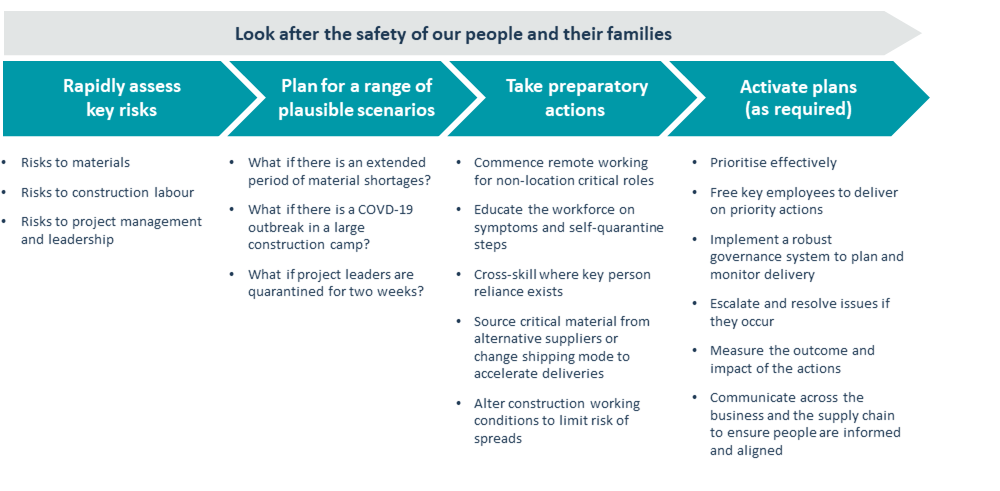Here's what you need to know in short:
Across the world organisations are struggling in how to manage their major capital projects. Live projects will need to adapt rapidly to the new demands and risks of delivering under the many threats presented by COVID-19. Entire projects, or elements of projects may need to be put ‘on hold’ temporarily to protect cash or comply with local government mandates, while others will have to stay on track. In making these difficult and complex decisions there are tough questions business leaders need to explore and find actionable answers. Establishing a Crisis Management Team is an essential starting point.
Capital projects will be impacted by COVID-19. The fundamental question is “How can we continue to run a suitably safe, efficient project when our construction bandwidth becomes constrained?” Whether it is people, resources, materials, designs – or all of them.
Project teams are reeling under the impact of the rapidly growing COVID-19 crisis, and it is often hard for people to move beyond the issues around keeping themselves and others safe. There is a big difference on the impact of the virus depending on how project teams respond to the new challenges they are facing across three key categories:
Live projects need to rapidly adapt to the new demands and risks of delivering under the many threats presented by COVID-19. Projects/elements of projects may need to be put ‘on hold’ temporarily to protect cash or comply with local government mandates, but others have to stay on track.
Domino effect:
Scenario analysis:
Accommodation camp management:
Remote working:
Equipment and materials:
Engineering and systems:
Remote management support tools:
Management systems:
Working together on site:
Proactive management:
Remote coaching and leading:

Director, Europe
Email: guy.turner@pip.global
Director, Latin America
Email: pablo.spinadel@pip.global
Director, CIS
Email: eriks.ciguzis@pip.global
Partner, ANZ
Email: mohamed.abdulahi@pip.global
Director, North America
Email: matt.ware@pip.global
Director, Africa
Email: mark.evans@pip.global
Director, SEA
Email: tom.schnitker@pip.global
| We actively reduce the climate impact from our operations and invest in community-based climate solutions to balance remaining carbon emissions |